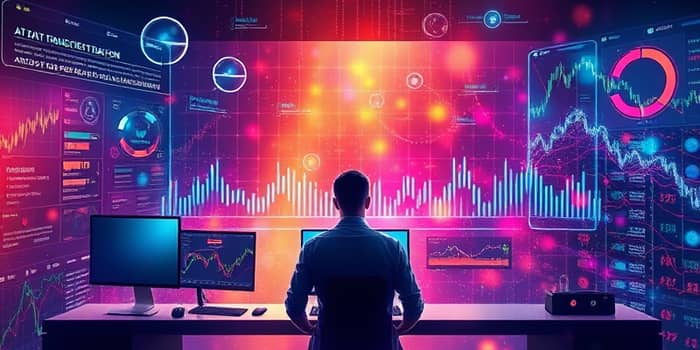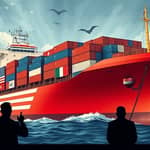
In 2025, algorithmic and AI-driven trading have become deeply woven into the fabric of global financial markets. The integration of cutting-edge technologies has accelerated transaction speeds, optimized execution strategies, and broadened access for both institutional and retail participants.
Yet, as these intelligent systems grow in sophistication, the irreplaceable value of human judgment endures. This article explores the symbiotic relationship between machines and humans, charting the latest innovations, evolving roles, regulatory landscapes, and the horizon of possibilities that lie ahead.
The year 2025 marks a watershed moment for algorithmic trading. What was once the exclusive domain of large funds now extends to individual investors, thanks to user-friendly platforms.
Machine learning models now underpin the majority of electronic trades, offering rapid real-time adaptation to market shifts and reducing slippage. Platforms like Nurp, Trade Ideas, and TrendSpider democratize access, equipping traders with advanced analytics previously reserved for Wall Street.
Furthermore, dynamically learning models that adapt continuously have supplanted static rule-based codes. These systems process both historical and live data, identifying complex patterns invisible to the human eye and optimizing execution strategies on the fly.
Several key technological breakthroughs drive today’s AI-powered trading environment, including predictive analytics enriched by deep learning for precise market forecasts. Automated sentiment analysis leverages advanced natural language processing to transform news and social media feeds into actionable insights. Modern risk engines perform continuous dynamic risk assessment and hedging that anticipates downturns and safeguards portfolios. Personalization engines tailor algorithmic strategies to individual investor mandates and ESG criteria.
These innovations manifest through a variety of algorithmic strategies:
Despite the leap forward in automation, humans remain indispensable. AI excels at pattern recognition and execution speed, but it lacks the intuition and creative problem-solving that only people can provide.
Key roles fulfilled by human professionals include:
Moreover, firms are embedding human-in-the-loop decision making protocols into their AI governance frameworks. Human experts evaluate model outputs, validate risk thresholds, and approve critical decisions before implementation.
As algorithmic trading proliferates, regulators worldwide are intensifying scrutiny. Transparency, fairness, and accountability have become central tenets of oversight.
Key risks confronting traders and institutions include:
To mitigate these threats, firms deploy strategies like dynamic hedging, multi-strategy AI portfolios, and continuous human oversight for anomaly detection. Regulatory bodies mandate interpretable AI models, comprehensive audit trails, and robust reporting standards.
Algorithmic trading is no longer an exclusive club. Retail traders now harness advanced backtesting, real-time alerts, and customizable automation through intuitive platforms.
This democratization transforms market dynamics by allowing individuals to build bespoke strategies that align with their risk appetite, time horizon, and ethical considerations such as sustainability and ESG integration.
According to a Gartner survey, 85% of firms plan to increase hyperautomation output within the next 12 months. Leading financial institutions deploy between 5 and 39 dynamic strategies per algorithm in production. While precise market share figures remain elusive, it's clear that AI-driven systems now account for the majority of electronic trading volume, underscoring their transformative effect on global finance.
As we peer into the next decade, several transformative trends emerge:
The future of algorithmic trading lies in the seamless integration of machine precision and human ingenuity. By embracing both, market participants can navigate complexity, manage risk, and unlock opportunities ahead.
In 2025 and beyond, the human touch in algorithmic trading will not fade—it will evolve, redefined by collaboration with artificial intelligence and machine learning to forge new frontiers in the global financial marketplace.
References





